TL;DR
- Vibe-coding = intent-first dev mixing LLMs with deterministic generators and agents.
- Flatlogic ranks 2025 tools by code ownership, deployability, stack fit, AI reliability, and TCO.
- AppWizzy leads for enterprise: dedicated VMs, full code ownership, MySQL/Postgres, cron/background jobs.
- Replit, Memex, Lovable.dev, Bolt.new, Co.dev, Create.xyz, Databutton, Base44, ToolJet fit lighter use cases.
- Trends: vertical tools, explainable agents, edge/on-prem builds, richer integrations, transparent pricing.
Fact Box
- Article recommends a hybrid: LLM intent + deterministic generation + agents for incremental edits.
- AppWizzy provides a dedicated VM per project, full code ownership, and MySQL/Postgres support.
- Replit offers reserved VMs with autoscaling and scheduled workflows across container-compatible runtimes.
- Lovable.dev targets Next.js+Supabase serverless apps and supports GitHub export.
- Flatlogic maintains an awesome list of AI software dev agents and vibe-coding tools on GitHub. Source
If you’re choosing between the new wave of vibe-coding tools, read this to the end; it will save you weeks of trial-and-error and a few painful invoices.
When people type “best vibe-coding tools” into Google, they’re really asking:
- Which vibe-coding tools will let me ship production software, not just demos?
- How do vibe-coding tools compare on code ownership, deployment, and total cost of ownership?
- What’s the smartest way to mix AI agents with deterministic generation so my app doesn’t collapse under real users?
There’s a lot of noise. Some tools are brilliant for prototypes; others are battle‑tested. In our Flatlogic Starting Web App in 2025, Research and day‑to‑day work building SaaS, CRM, and ERP systems, we’ve audited dozens of platforms.
By reading this article, you will learn precise definitions, the state of the market, a practical evaluation framework, a ranked shortlist of the best vibe-coding tools in 2025, and concrete next steps (including a tiny blueprint you can execute this week).
Terminology & Definitions
Before we compare vibe-coding tools, let’s agree on terms:
Vibe‑coding. An intent‑first development workflow is where you describe what you want (in text or structured prompts), and the system translates that into project scaffolds, data models, and real code. It mixes LLM reasoning with deterministic code generation.
Deterministic generator. A rule‑based engine (templates/ERB, code transforms) that turns structured definitions (JSON schema, DSL) into repeatable, production‑grade code. No hallucinations; same input → same output. 
AI agent. A tool that plans steps, edits code, runs tests, and coordinates sub‑tasks (terminals, editors, linters). Useful, but prone to drift without guardrails.
Code ownership. You receive a private repo (GitHub/GitLab) with sane licensing; you can host anywhere and modify with your team.
Deployable unit. A clean containerized app (Docker) or managed deploy (Cloud Run, Fly.io, Vercel) plus infra as code.
Production‑readiness. Auth, RBAC, migrations, seeds, logging, error boundaries, CI/CD, env management, and observability from day one.
Why Vibe-Coding Tools Are Taking Over in 2025
The market for vibe-coding tools has rapidly expanded, driven by three core trends:
- Cost Pressure & Talent Dispersion: Companies in tech hubs like Austin, TX, and Miami, FL, seek higher productivity with fewer developers, emphasizing “velocity per dollar.”
- Agentic Progress: AI’s capability to manage large codebases is practical but inconsistent without deterministic safeguards.
- Enterprise Expectations: Businesses demand secure, auditable, and predictable software, beyond mere rapid prototyping.
The consensus for success is a hybrid approach, combining LLMs for intent, deterministic code generators for structured outputs, and AI agents for incremental changes. Purely AI-driven solutions lack stability, while template-only solutions miss adaptability crucial for 2025.
How To Evaluate Vibe-Coding Tools
Selecting the right vibe-coding tool is crucial for the success of your development projects. The following criteria will help you systematically evaluate and choose the best solution tailored to your specific needs and ensure long-term scalability and reliability.
- Code Ownership & Licensing: Ensures full rights to modify, distribute, and commercially deploy your code.
- Deterministic Backbone: Guarantees clean, reproducible code outputs, significantly reducing debugging and maintenance overhead.
- Production Readiness: Includes built-in authentication, Role-Based Access Control (RBAC), robust logging mechanisms, thorough testing frameworks, and reliable CI/CD processes.
- Stack Compatibility: Ensures alignment with existing technology stacks (Next.js/Node, Django, LAMP stacks, databases like Postgres/MySQL).
- AI Agent Reliability: Efficient management of incremental edits and code diffs without instability.
- Deployment Workflow Integration: Seamless integration with deployment platforms (Docker, Cloud Run, Vercel, Fly.io).
- Total Cost of Ownership (TCO): Transparency in pricing, especially AI token usage and operational costs, avoiding unexpected expenses.
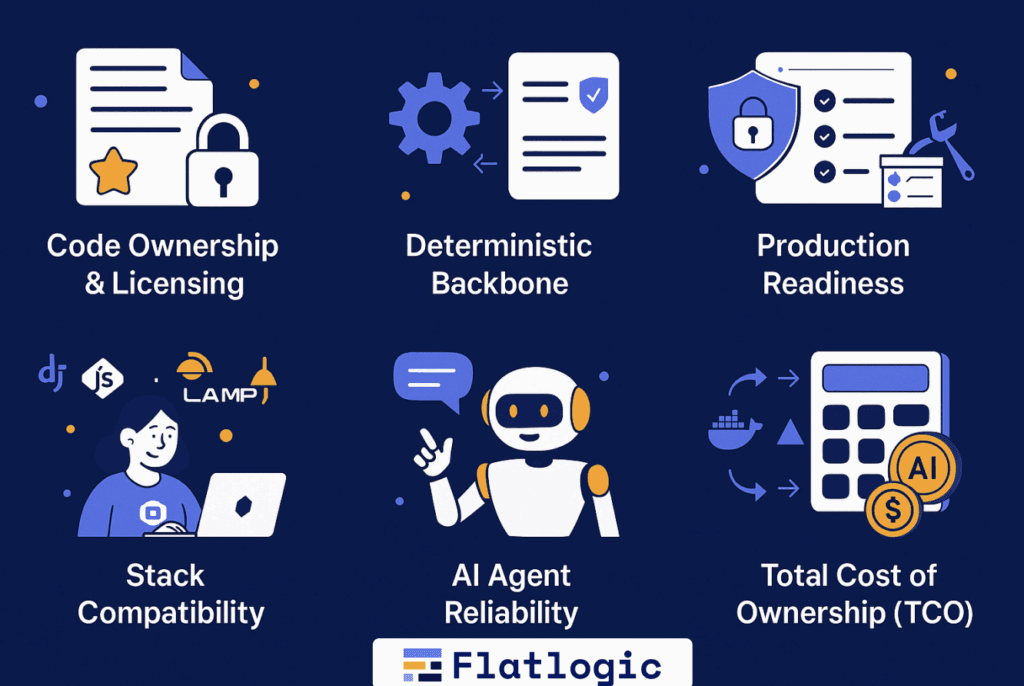
The Shortlist: Best Vibe-Coding Tools in 2025
Selecting the ideal vibe-coding tool can significantly influence your project’s success. In this section, I’m providing a curated ranking of vibe-coding tools based on real-world deliverables and production readiness, not just demos or theoretical capabilities. This list is based on extensive research conducted by Flatlogic. While individual results may vary depending on your specific requirements, this comparison matrix serves as a quick and reliable shortlist to help you make an informed decision swiftly.
Summary Comparison
Aside from research results, we also do our tracking of all possible “AI software development agents” and vibe coding tools in a dedicated GitHub awesome list: https://github.com/flatlogic/awesome-ai-software-development-agents.
We prepared a comparison of the tools mentioned in our research, and in this list below are the following dimensions:
- Your Own Cloud: Offers full control over hosting, data security, compliance, and cost management. Without it, reliance on third-party providers increases, potentially leading to higher costs and less flexibility.
- Stack Compatibility: Determines ease of integration, skillset alignment, and maintainability. Tools supporting multiple stacks provide greater flexibility.
- Cron / Background Jobs: Enables automation of repetitive tasks, essential for scalable and reliable applications.
- Database Support: Database compatibility affects scalability, data management efficiency, and integration capabilities.
- Code Export / Ownership: Critical for long-term maintenance, customization, and commercial use, ensuring full control and flexibility.
Final Comparison Table:
| Tool | Your Own Cloud | Stack Compatibility | Cron / Background Jobs | Database | Code Export / Ownership |
| AppWizzy | ✅ Dedicated small VM per project | ✅ LAMP/Next etc. | ✅ OS cron & workers | ✅ MySQL/Postgres | ✅ You own code |
| Replit (Deployments) | ✅ Reserved VM / Autoscale workers | ✅ Any runtime via container | ✅ Workers & scheduled workflows | ✅ Replit Postgres + external | ⚠️ Export via repo; you control |
| Memex (desktop) | ⚠️ Local; BYO deploy | ✅ Any stack | ✅ OS cron once deployed | ⚠️ User-defined | ✅ Local files; you own |
| Lovable.dev | ❌ Hosted/BaaS | ❌ Mostly Next.js + Supabase | ⚠️ External schedulers | ✅ Supabase | ✅ GitHub export |
| Bolt.new | ❌ WebContainers / bolt.host | ❌ Node‑only | ⚠️ Vercel/Netlify cron | ⚠️ Bolt DB or external | ⚠️ Export possible |
| Co.dev | ❌ Hosted serverless | ❌ Next.js only | ⚠️ Edge cron at host | ✅ Supabase | ✅ Download code |
| Create.xyz | ❌ Hosted serverless | ⚠️ Full-stack via JS | ⚠️ Provider cron | ✅ Neon Postgres | ⚠️ Export unclear |
| Databutton | ❌ Hosted serverless | ⚠️ Python apps | ⚠️ Limited cron | ✅ Built-in Postgres (Neon) | ⚠️ Code within platform |
| Base44 | ❌ Built-in hosting | ❌ Functions model | ⚠️ Backend functions only | ⚠️ Managed data layer | ❌ No general export |
| HeyBoss | ❌ Hosted no-code | ❌ No | ❌ No | ⚠️ BaaS | ❌ No export |
| ToolJet (self-host) | ⚠️ Self-host platform | ⚠️ Node/JS runtime | ⚠️ Workflows, not OS cron | ✅ Multiple DBs | ✅ Open Source |
This comprehensive comparison is intended to simplify your evaluation and selection of vibe-coding tools, highlighting their strengths and limitations relevant to production environments.
Best Vibe-Coding Tools in 2025
Choosing the right vibe-coding tool can be overwhelming due to the variety of options available. In this detailed comparison, I’ve outlined the strengths, potential applications, pricing models, standout features, and common pitfalls of each leading vibe-coding tool in 2025, allowing you to identify the ideal solution for your specific needs and project complexity.
AppWizzy (Flatlogic)
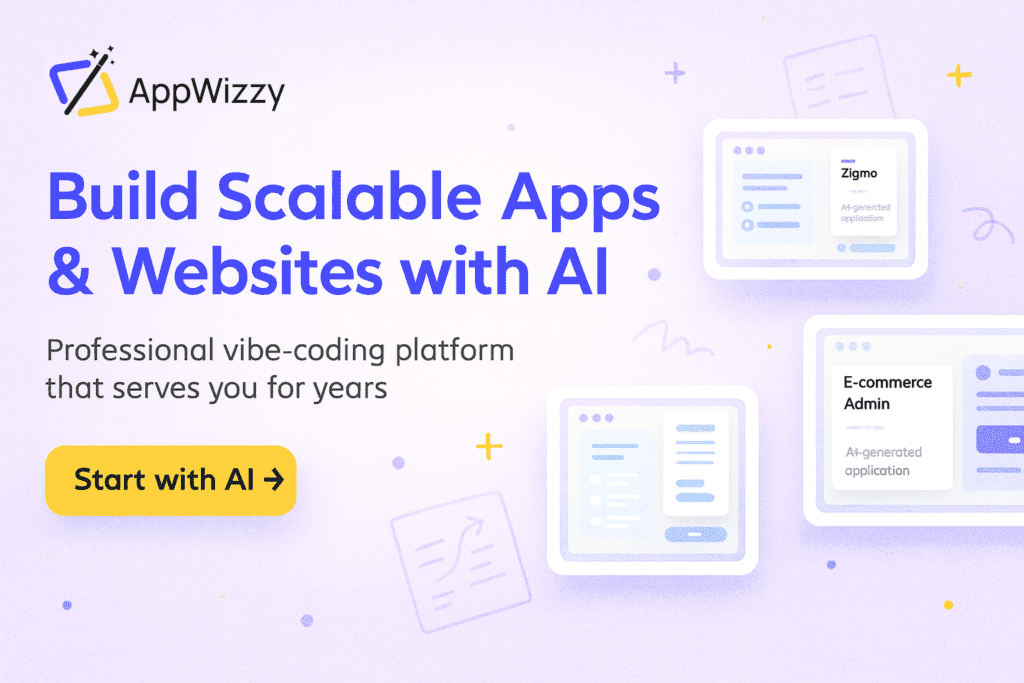
AppWizzy is a professional vibe-coding platform, provides dedicated small virtual machines per project, ensuring robust scalability and full-stack compatibility, including Next.js, Node, and traditional LAMP stacks. It offers complete code ownership and supports databases like MySQL and Postgres. Ideal for SaaS, CRM, and ERP applications, AppWizzy emphasizes deterministic code generation for stable, production-ready outputs.
Complexity Supported: High (enterprise-grade SaaS, CRM, ERP)
Pricing: Flexible, usage-based model
Key Features:
- Dedicated VMs per project
- Full-stack support (LAMP, Next.js, etc.)
- Built-in cron jobs & background tasks
- Complete code ownership
Pitfalls: Higher initial setup time compared to fully serverless options
Replit
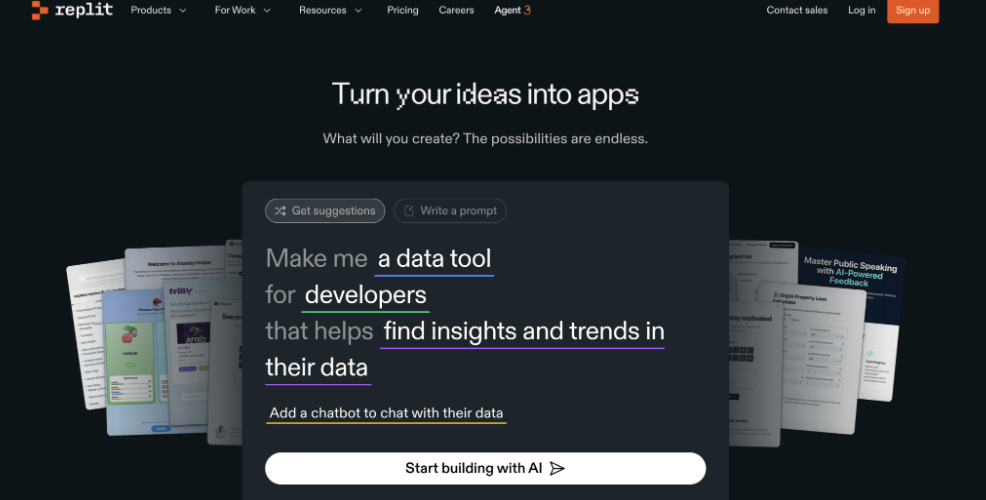
Replit offers reserved VMs with autoscaling capabilities and supports any runtime compatible with containers. It’s excellent for rapid prototyping and smaller projects requiring quick iteration cycles. With a reliable database and scheduled workflows, Replit provides substantial flexibility.
Complexity Supported: Medium (prototypes, moderate applications)
Pricing: Freemium, usage-based pricing tiers
Key Features:
- Reserved VM with autoscaling
- Compatible with various runtimes
- Built-in database management
Pitfalls: Export via repo may require additional configurations; limited scalability for larger enterprise apps
Memex
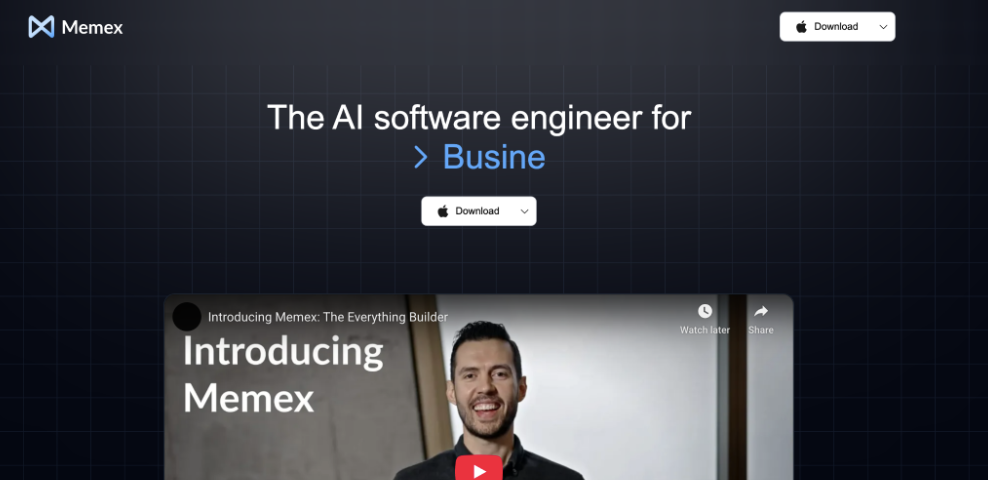
Memex offers a local, desktop-oriented solution, providing full control over code and hosting. It’s a flexible choice for developers who prefer self-hosting, but it requires users to set up their own databases and deployment infrastructure.
Complexity Supported: Medium (custom self-hosted apps)
Pricing: Free, local setup
Key Features:
- Local control over code
- Stack agnostic
Pitfalls: Requires manual setup for deployment and database management
Lovable.dev
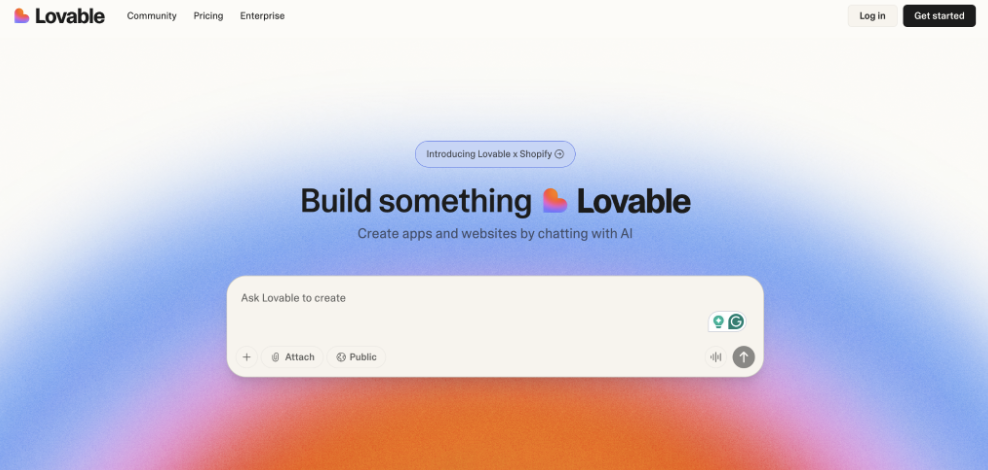
Lovable.dev is serverless-focused, mainly leveraging Next.js and Supabase, making it suitable for quick app deployment and marketing-focused applications. It provides straightforward integration but lacks full-stack versatility and scalability.
Complexity Supported: Low to medium (small to mid-sized apps)
Pricing: Subscription-based
Key Features:
- GitHub export
- Supabase integration
Pitfalls: Limited server-side compute capabilities
Bolt.new
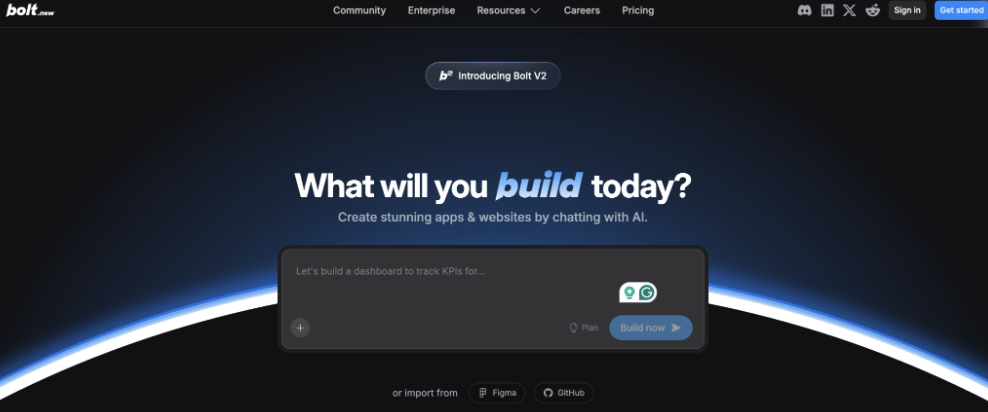
Bolt.new uses web containers, primarily supporting Node.js, suitable for rapid deployment on platforms like Vercel and Netlify. It’s beneficial for fast frontend and API development, but lacks comprehensive backend options.
Complexity Supported: Low to medium (Node.js-based apps)
Pricing: Freemium, subscription tiers
Key Features:
- Quick deployment
- Node.js specialization
Pitfalls: Limited backend compute and export flexibility
Co.dev
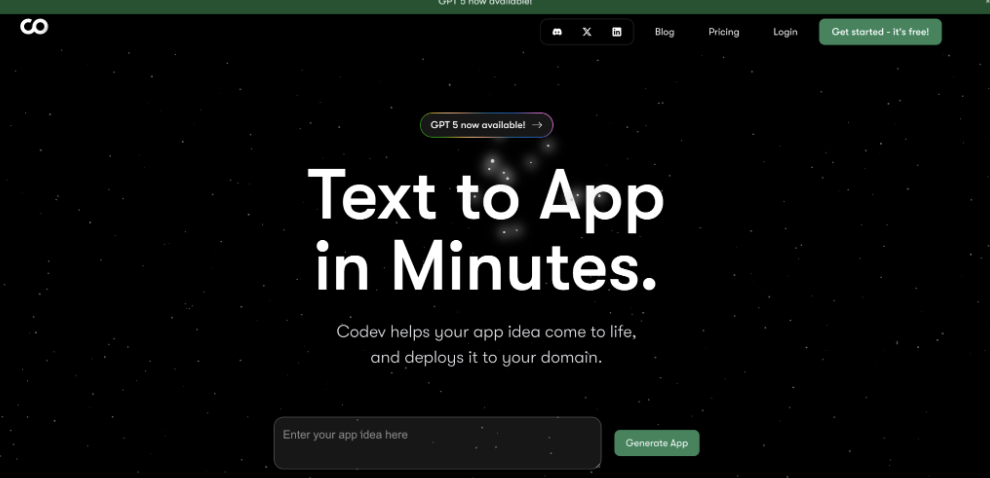
Co.dev provides a streamlined Next.js and Supabase-focused environment, ideal for startups and simple applications needing rapid deployment. It offers good frontend performance but encounters scalability constraints.
Complexity Supported: Low (startups, small-scale apps)
Pricing: Freemium, tiered pricing
Key Features:
- Next.js and Supabase integration
- Quick code download
Pitfalls: Limited scalability beyond initial phases
Create.xyz
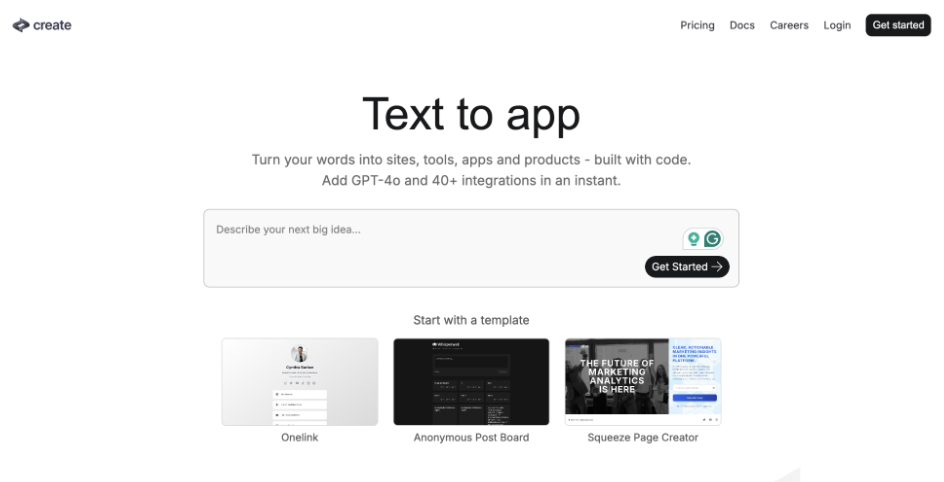
Create.xyz is a no-code, JavaScript-centric serverless platform suited for quick prototype and basic application development. It integrates seamlessly with Neon Postgres but offers limited flexibility for complex use cases.
Complexity Supported: Low (basic prototypes)
Pricing: Freemium, monthly subscriptions
Key Features:
- Neon Postgres integration
- Quick prototyping
Pitfalls: Limited export and backend capabilities
Databutton
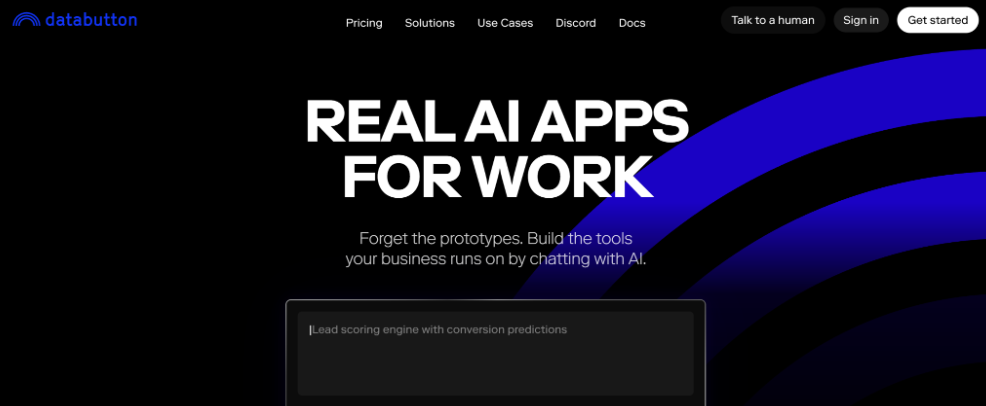
Databutton specializes in Python-based data applications, with built-in Neon Postgres integration. It’s an ideal choice for data-driven teams but offers limited flexibility outside this niche.
Complexity Supported: Medium (data-focused apps)
Pricing: Usage-based, premium tiers
Key Features:
- Python app optimization
- Built-in data management
Pitfalls: Limited stack options and cron job functionality
Base44
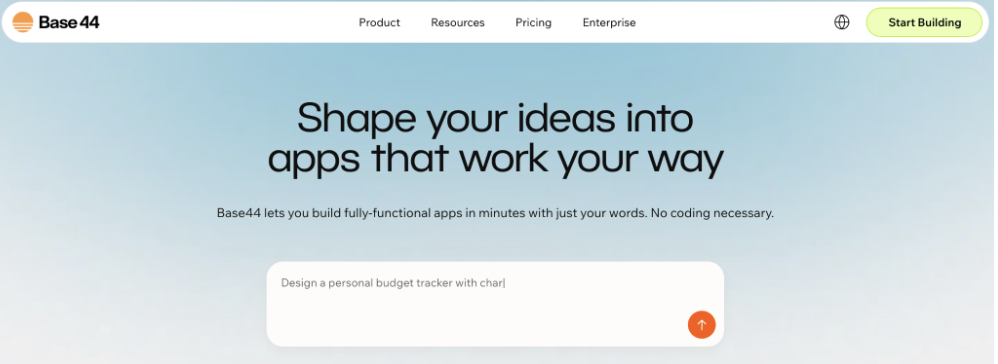
Base44 emphasizes a built-in hosting and backend functions model, best suited for small to medium-sized enterprises. It simplifies backend management but lacks broader app support and code export options.
Complexity Supported: Low to medium (SME applications)
Pricing: Subscription model
Key Features:
- Managed backend
- Simplified hosting
Pitfalls: No general code export, limited stack options
ToolJet
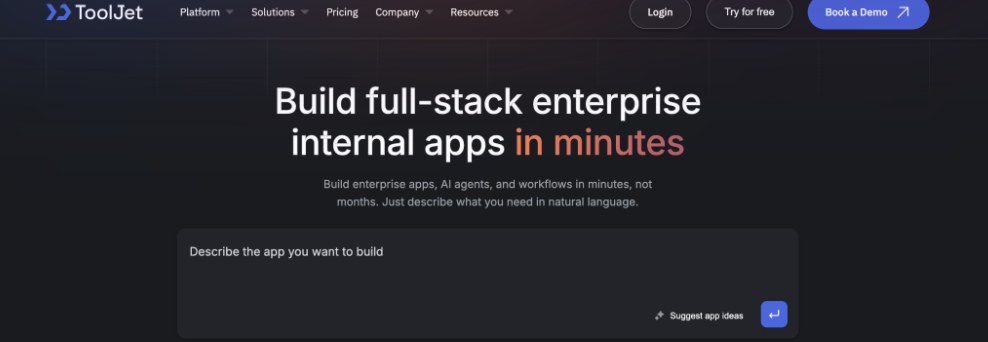
ToolJet provides a self-hosted, Node.js-oriented platform ideal for internal tools. With support for various databases, it emphasizes customizability and open-source flexibility.
Complexity Supported: Medium (internal business apps)
Pricing: Open-source, free
Key Features:
- Open-source platform
- Customizable databases
Pitfalls: Requires self-management of hosting and compute resources
Which Vibe‑Coding Tool Should You Choose?
Choosing the right vibe-coding tool involves carefully considering your project’s specific needs, your team’s technical expertise, and your long-term objectives. If your priority is having full control, scalability, and the capability to build complex, enterprise-level applications, look for tools that offer extensive code ownership, robust scalability, and comprehensive stack compatibility.
For rapid prototyping or smaller-scale projects requiring quick development cycles, opt for simpler, faster-deployment tools. Teams focused specifically on data-driven applications might prefer specialized tools optimized for data management and analytics.
If your team is experienced and comfortable managing infrastructure independently, consider solutions that grant greater flexibility and customization. Conversely, if simplicity and ease of use are paramount, tools providing managed deployments and hosting might be ideal.
Ultimately, evaluate each option based on stack compatibility, readiness for production environments, clarity in code ownership rights, and the total cost of ownership (TCO). Understanding these aspects will ensure you select the best vibe-coding tool aligned with your project’s demands and organizational goals.
Future Trends in Vibe-Coding Tools
As vibe-coding evolves beyond its initial hype, the industry is moving toward several defining trends that will shape its future. Here are key shifts we foresee:
1. Rise of Specialized Vertical Tools
While general-purpose vibe-coding platforms dominate today, the future points toward specialized tools tailored for specific verticals like fintech, healthcare, and logistics. Domain-specific tools will embed regulatory compliance, specialized data models, and integrations unique to their industries, significantly shortening time-to-value.
2. Enhanced AI Agents with Transparent Reasoning
Future AI agents will transition from opaque decision-making to explainable, transparent reasoning. Tools providing visibility into agent decisions-such as why certain architecture patterns were chosen or specific code changes implemented-will build trust, improve auditability, and enable safer iterative development.
3. Decentralized Vibe-Coding (Edge AI)
The centralization trend is likely to reverse as more companies demand full control over data security, compliance, and latency. Expect growth in “Edge Vibe-Coding”-where deterministic generators and lightweight AI agents operate locally or on-premises, enabling more secure, responsive, and compliant development workflows.
4. Ecosystem Integration and Marketplace Models
Vibe-coding platforms will increasingly become integration hubs, connecting seamlessly with third-party APIs, microservices, and developer marketplaces. This approach empowers developers to extend their apps rapidly, leveraging pre-built modules and integrations to solve specific business needs quickly.
5. Cost Transparency and Predictability
Given increasing scrutiny on operational costs, vibe-coding platforms will prioritize transparency and predictability in their pricing models. Expect clearer, credit-based billing for AI tokens, compute resources, and infrastructure usage-facilitating precise budgeting and cost management.
By understanding and preparing for these trends, organizations can position themselves strategically, leveraging vibe-coding tools not just for short-term wins but as foundational elements of their long-term digital strategies.
Conclusion
In 2025, vibe-coding tools became essential assets for developers and businesses aiming for efficiency, scalability, and robust software solutions. Navigating the wide variety of available tools can be challenging, but clearly defining your project’s specific needs and expectations simplifies the decision-making process.
Remember, successful vibe-coding relies on a hybrid model that effectively combines AI-driven intent recognition with deterministic, predictable code generation and targeted incremental modifications. Prioritize tools that ensure production readiness, stack compatibility, and transparency in both code ownership and overall costs.
By carefully evaluating these critical factors, you can confidently select a vibe-coding tool that supports your immediate goals and scales effectively with your long-term objectives. For a no-nonsense, reliable vibe-coding solution, explore Flatlogic (AppWizzy) and see how quickly your ideas become a scalable reality. Embrace the future of software development with informed decisions and strategic implementations.
Comments